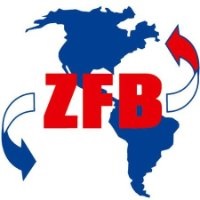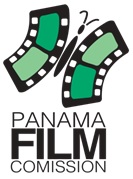| In Spanish, we refer to Panama as the 3P´s “puente, paso, puerta” (bridge, passage, and door). Panama is the bridge between Central/North America and South America, the passage that links the Pacific Ocean and the Caribbean Sea and an open door for everyone. We are truly the crossroads of the world. From the moment Vasco Nuñez de Balboa discovered the South Sea (Pacific Ocean), we became a logistics hub. Our Pacific Coasts were used as embarkation ports for all exploratory missions to Central and South America, while our Caribbean Coasts were used as trading posts and departure spots for the Old Continent. Later on, the first inter-oceanic railroad was built, by the US, and proved to be the fastest link between the West and East Coast cities. Panama is also the place that the King of Spain, Charles V, originally recognized as a potential site for creating a water passage, and which was chosen by France in 1881 and later taken over by the US in 1904 for the construction of the Panama Canal. Officially opened on August 15, 1914, the Panama Canal greatly reduced the amount of time ships took to travel between the Atlantic and Pacific Oceans, enabling them to avoid the lengthy, hazardous Cape Horn route around the southernmost tip of South America. This route opened new markets and possibilities and helped integrate the nations in and around the Pacific Ocean into the world economy. On August 20, 2013, the Panama Canal inaugurated the third set of locks, which facilitate the passage of larger ships to transport more than twice the cargo that they transported through the original locks. | |
GROSS DOMESTRIC PRODUCTPanama is an upper-middle income country with an estimated (up to Q3 of 2023) gross domestic product of 57.6 billion U.S. dollars, according to the National Institute of Statistics and Census. During the past 50 years, the real growth of the Panamanian Gross Domestic Product has averaged 5.0%, which makes Panama one of the fastest growing economies in Central and Latin American. Since 2004 it has grown at a steady pace, and during the 2008-2009 financial crisis, the Panamanian financial sector demonstrated resilience, which helped attain a positive increase in GDP. The following years, Panama's GDP growth capped at approximately 11% in 2011, and the trend of the following years averaged to approximately 4.6%. Because of the COVID-19 outbreak, the National Institute of Statistics and Census estimates that the national GDP contracted 17.7% between 2019 and 2020. These conditions have led Panama to receive downgraded ratings, with stable and negative outlooks, by major sovereign debt credit rating agencies. Nevertheless, the GDP rebounded with a growth of 15.8% in 2021 and 10,8% in 2022. Using estimated numbers, Panama’s GDP (up to Q3 of 2023) has grown by 8.8% by Q3 of 2023. Panama’s economy is an important transport and logistical hub and a trade and financial center. The country has seen a significant amount of infrastructure investment over the past three decades and boasts world-class airports and seaports. Three key factors have driven Panama’s success:
According to The World Bank, growth is expected to be around 6.3 and 6.5 percent over the next two years, supported by construction, transport and logistics, and tourism. Panama’s productive capacity, measured by UNCTAD’s productive capacity index, is above Latin America and the Caribbean average. Panama has improved its productive capacity score from 52.6 in 2019 to 53 in 2022 and among the eight sub-indicators of productive capacity index, Panama scores higher than all its peers in transport and in structural change. Fiscal policy is expected to adhere to Panama’s Social and Fiscal Responsibility law, although the incoming authorities will need to enact measures to address fiscal risks arising from Canal and mining revenues and pension imbalances, in addition to potential climate change shocks. The public debt and fiscal deficit are projected to decrease to 55.3 and 1.5 percent of GDP by 2025, respectively. Poverty is expected to continue decreasing over time and approach pre-pandemic levels by 2025. Over the past thirty years, the country excelled in job creation, leading to an outstanding decrease in poverty. However, unemployment and informality increased between 2017 and 2019 as the pace of growth slowed down and further worsened during Covid-19. It is estimated that poverty in 2023 decreased by 0.3 percentage points, reaching 13.4 percent. The government has also taken significant steps to boost national innovation capacity and promote entrepreneurship. |
INFLATIONAccording to the National Institute of Statistics and Census (INEC) report on the Consumer Price Index (CPI), as of December 2023, the total rate of inflation in Panama was 1.5%. The National Urban CPI showed a 1.9% interannual fluctuation for the months of December 2023–22. Between December 2023 and December 2022, the CPI in the Panama and San Miguelito districts showed an interannual fluctuation of 1.9%. For December 2023–2022 the Rest Urban CPI displayed an interannual fluctuation of 1.9%. Between January and December of 2023–2022 there was a 1.5% fluctuation in the National Urban CPI. The National Urban CPI showed a 0.1% monthly change from November 2023 to December 2023. It is projected that the National Urban CPI will be 109.9 in December. The housing, water, power, and gas industries experienced the biggest price rises in a single year, at 9.9%. While education, which includes the cost of basic, secondary, and additional components, saw a 3.7% interannual increase in December. Miscellaneous goods and services had a 3.6% increase in the CPI, while food and non-alcoholic beverage prices increased by 2.4%. The alcoholic beverages and tobacco group changed by 2.3%, restaurants and hotels by 2.1%, health by 1.3%, and transportation by 1.1%. Source: National Institute of Statistics and Census (INEC) of the Comptroller General of the Republic. |
FOREIGN DIRECT INVESTMENTAccording to data from the country's financial account published by the National Institute of Statistics and Census (INEC) of the Comptroller General of the Republic, the flow of foreign direct investment (FDI) in the Panamanian economy closed the year 2023 at $2,014.6 million, a 30.7% decrease from the previous year. Regardind the report, the decline was caused by 40.2% less in reinvested income, mostly by foreign license banks. In contrast to the previous year, the value of the other capital segment dropped by 9.9%, while the value of the total assets relative to direct investors increased by 243.6% and the value of the liabilities relative to direct investors increased by 8.2%. In contrast, the latest number received by the country indicates that FDI flowed into Panama in 2022 totaled $2,906 million, a 50.8% increase over the $1,927 million recorded in 2021. For comparison, prior to the epidemic in 2019, the nation received $3,895 million in foreign direct investment (FDI). Furthermore, the record amount of $4.75 billion set in 2018 has also not been met. Source: National Institute of Statistics and Census (INEC) of the Comptroller General of the Republic. |
|
INVESTMENT CLIMATEPanama’s investment ratings have slightly improved after the pandemic. However, they have been negatively impacted by the risk of damage to investor confidence and to future private investment stemming from the controversy over the mining contract with Minera Panama, the relatively narrow government revenue base, the uneven record of accomplishment of meeting fiscal consolidation targets, the susceptibility to global financial conditions due to reliance on external funding, among other reasons. Standard & Poor's credit rating for Panama stands at BBB with negative outlook. Despite the recent downturn, S&P projections expect GDP growth over the next few years to average 4.4%. Moody's credit rating for Panama was last set at Baa3 with stable outlook. Nevertheless, Moody’s stable outlook reflects the expectation that robust economic growth prospects will continue. Fitch's credit rating for Panama was recently downgraded and last reported at BB + with stable outlook. |
|
EXPORT & STRATEGIC SECTORSAccording to the preliminary statistics of the General Comptroller´s Office, in 2022 Panama imported US$3,677.6 million from the U.S., which represents 24.1% of the total imports of the country. In the same year, Panama has exported US$124.3 million to the U.S., that is 3.4% of the total exports. Between January and September 2023, Panama imported US$2,139.6 million from the U.S., which represented 19.3% of the total imports of the country. In the same period, Panama has exported US$114.6 million to the U.S., that is 3.9% of the total exports.
Source: National Directorate for Export Promotion – Ministry of Commerce and Industry of Panama |
EXPORT INCENTIVE LAWSThe Trade Promotion Agreement between The United States of America and Panama has set a new commercial phase, increasing the ease of doing business between these countries. As for Panama, the government has enacted “Free Zones” governed pursuant to Law N° 32, April 5th, 2011, “Through which a Special, Integral and Simplified Regime for the Creation and Operation of Free Zones is Established and Dictate Other Provisions”. The Free Zones law establishes several Fiscal, Migratory and Labor incentives. The permitted activities, previous to the export procedure, within these Zones are:
Click on the link below to download the complete law: Export Processing Zones: Law N° 32, April 5th, 2011 (in Spanish)
|





